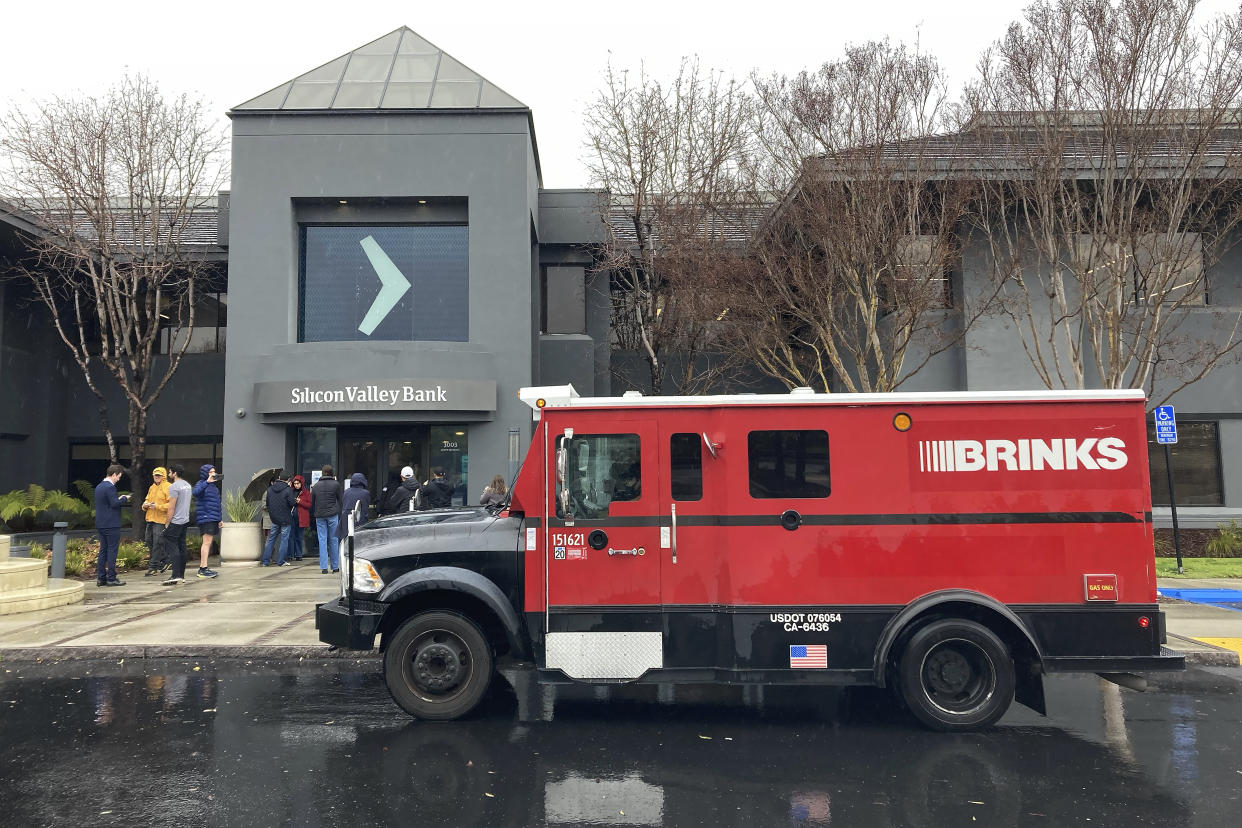Treasury, regulators unveil bank rescue plan to stem crisis

Federal authorities took aggressive action Sunday to end days of global uncertainty and panic, agreeing to backstop all depositors for two failed lenders — and to prevent runs on any other financial institutions.
The Treasury Department, Federal Reserve and FDIC vowed that taxpayers would not bear losses from the moves to bolster the depositors at the two shuttered lenders, Silicon Valley Bank and Signature Bank. The agencies said Silicon Valley Bank’s depositors would have access to all their money on Monday.
In a stunning move, the Fed also announced that it would offer cash loans of up to a year for any bank putting up safe collateral — an action that in theory would allow banks to handle deposit withdrawals of any amount. The goal: to reassure people that they don’t need to take their money out at all.
The agencies were praised by lawmakers from both parties for taking swift action to stem a financial panic. But Federal Financial Analytics managing partner Karen Petrou said the situation was one of their own making, criticizing regulators for not acting on problems at both banks before they failed.
The massive intervention was required because the Fed and FDIC "were caught flat-footed at SVB, failing not only to anticipate its structural weakness due to concentrated deposits and illiquid assets, but also the broader shock [that] closing a big bank would do after decades of depositor bailouts," said Petrou, who advises bankers on policy.
The moves will raise questions about the extent to which new rules put in place after the 2008 financial crisis are sufficient to keep banks operating safely.
Officials sought to assure investors and depositors those rules, intended to prevent government intervention, had worked.
“The U.S. banking system remains resilient and on a solid foundation, in large part due to reforms that were made after the financial crisis,” Treasury Secretary Janet Yellen, Fed Chair Jerome Powell and FDIC Chair Martin Gruenberg said in a statement. “Those reforms combined with today’s actions demonstrate our commitment to take the necessary steps to ensure that depositors’ savings remain safe.”
The dramatic moves marked an attempt by the Biden administration and regulators to contain any financial contagion triggered by Silicon Valley Bank's sudden collapse in a social media-fueled bank run on Friday.
Fear of a possible financial panic gripped Washington as policymakers and industry groups raced for information on whether the bank’s customers — which included roughly half of all Silicon Valley-backed businesses — would be able to make payroll and transact on Monday morning.
“I doubt that anyone that has anything to do with Silicon Valley Bank, both here at home and across the country, has really slept a full night without worry,” Rep. Anna Eshoo, a California Democrat whose district includes a large swath of Silicon Valley, said in an interview late Sunday afternoon.
There were also concerns that depositors might yank their funds from similar institutions, a senior Treasury official told reporters.
While the FDIC had explored a sale of SVB on Sunday, it was ultimately determined that emergency measures would offer more clarity to depositors more quickly. But the official did not rule out sales of either of the failed banks.
Sunday’s announcement, which arrived shortly before Asian markets opened, included news that Treasury, the Fed and the FDIC had made a special determination that failing to back customer deposits at the banks risked feeding out and harming the broader financial system. As a result, all the deposits of both collapsed banks will be guaranteed by the FDIC, which has a dedicated fund — financed with fees paid by banks — for this purpose.
“Right decision,” Sen. Mitt Romney (R-Utah) tweeted in response to the news.
The Fed also made adjustments to its longstanding backstop, known as the discount window, which like the new temporary lending program provides collateralized loans, but with a shorter maturity.
Historically, the Fed has charged borrowers a penalty rate, but it is now offering those loans at market rates. The discount window accepts a broader range of assets as collateral than the new emergency program.
Over the weekend, the FDIC collected bids on the assets of Silicon Valley Bank in a race to offer a path forward for businesses whose funds are stuck at the failed lender.
Venture firms and startups celebrated the announcement on Sunday, including major crypto businesses whose products were buffeted by choppy markets in the wake of SVB’s collapse.
“We were heartened to see the US government and financial regulators take crucial steps to mitigate risks extending from the fractional banking system,” said Jeremy Allaire, co-founder and CEO of the stablecoin issuer Circle. “100% of deposits from SVB are secure and will be available at banking open tomorrow."

